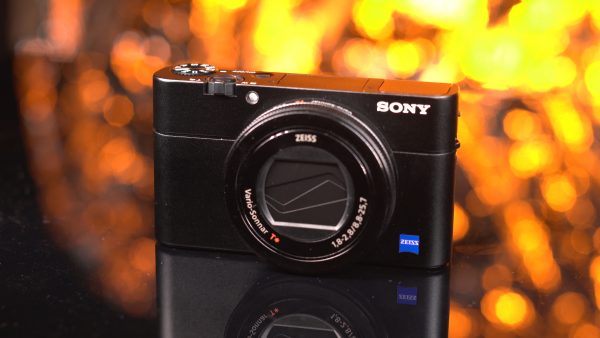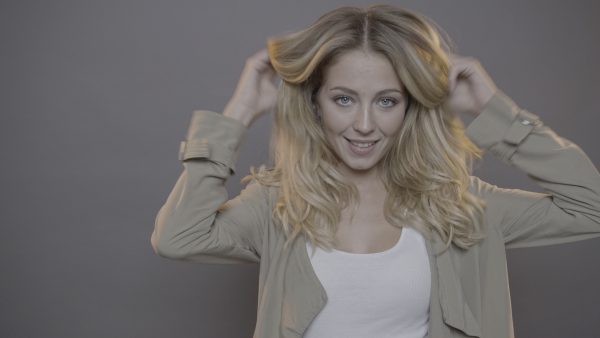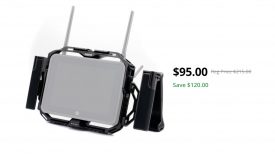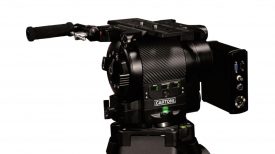One of the more interesting specifications of the new Sony RX100 V is that it can shoot still photos at full 20 megapixel resolution at a blistering 24 frames a second (fps). It can do this for around six seconds or so in either top quality JPEG or Raw at a resolution of 5472 x 3648 in 3:2 aspect, or 5472 x 3080 in 16×9. This raises the prospect that you could combine these photos in sequence to create a super high resolution/low compression video clip which should allow a high degree of image adjustment – albeit with no audio.

At the Sony Europe press event yesterday I was keen to put this to the test. I put a 64GB Sandisk Extreme Pro 280 MB/s card into one of Sony’s RX100 V demo cameras and started shooting high speed bursts. I thought I would try to make the image motion as video like as possible by choosing the a 1/50th shutter speed (although as we’ll see later this wasn’t the best idea). I also selected S-Log2 gamma and S-Gamut to give the image maximum latitude.
Focus was set manually in case using autofocus would effect the timing of the shots. I selected the highest quality Jpeg option because until Adobe and others update their Raw decoding software I don’t have a way to process the RX100 V Raw images. Lastly I set the camera to silent so that it made no noise when shooting.
As expected the camera shot a continuous burst for several seconds until the buffer filled up. At that point it then takes quite a long time to write the images to the memory card. In practice you wouldn’t want to use this form of shooting for anything that was time critical or unrepeatable.

It was only when I returned home and started to create image sequences on my computer that I saw a problem. What I had thought was 24 fps was in fact closer to 17 fps (verified by checking with a sequence that I shot of a stopwatch). It turns out that in order to get the maximum 24 fps you need to use a shutter speed much higher than 1/50th of the second. I was subsequently told that by going up to 1/100th of a second will get a frame rate of around 23 fps, but haven’t been able to test this again myself. Clearly this makes shooting video challenging if you want to maintain film-like motion.
Anyway, back to the images that I shot. I created several clips that are played back at 24fps, these stutter heavily as you would expect given that the actual frame rate was closer to 17fps. Check out the clip below of Kai from Digital Rev to see what I mean.
I also assembled some clips retiming the 17fps to play at a regular frame rate and these do look much better – although clearly not too useful for proper video. I graded some of these quickly in FilmConvert just for fuin.
The overall resolution and detail of the images is really impressive though. The Sony 1-inch sensor is capable of some impressive results in stills mode and so any video created from these is going to share the same detail and definition. Playback on Youtube or Vimeo doesn’t really do the files justice. Talking of playback my 3.5Ghz trashcan MacPro struggled to play back the 5.5K files too, something else to consider if you want to try this.
Shooting 5.5K video this way is certainly possible and actually quite a lot of fun. For practical purposes I don’t see this as being very useful to the average shooter and it certainly isn’t going to replace a true 5K or 6K cinema camera. The only real solution to getting true 24fps with the RX100 V is clearly going to require excessively high shutter speeds that won’t suit all subjects, then you have to worry about audio and the wait as the buffer empties between clips.
That said I can see several special use cases for the 5.5K videos where the irregular frame rates and other downsides won’t matter so much. In factual work short scene setting clips of locations and vistas could easily be shot using this – in a very similar way to how you might use a time-lapse now. This could be especially useful for vistas with bright highlights and deep shadows, sunsets and such like, which would benefit from the use of extra dynamic range Raw video brings.





